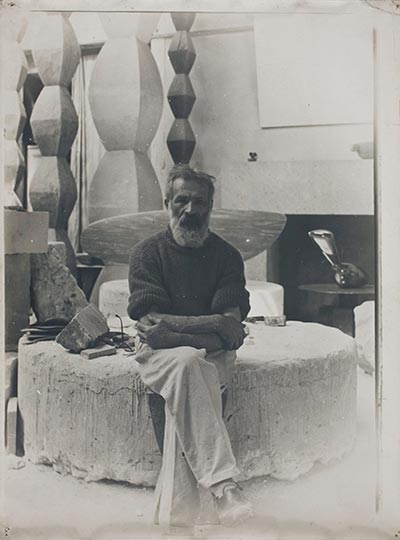‘Brancusi, Rosso, Man Ray’ at the Museum Boijmans Van Beuningen, Rotterdam brings together the work of three of the most influential artists of the 20th century. Francesco Stocchi explains the thinking behind the exhibition, and how he came to curate it.
Click here for a slideshow of exhibition highlights
Can you tell us a bit about the exhibition:
The exhibition investigates the realm of representation by exploring the interdependent relationships between sculpture and photography: how the latter can be fundamental to the artist’s practise, rather than mere documentation.
What makes this a distinctive show?
It is fascinating, if not unique, to gather three great artists altogether. Three different positions in art history, three distinct approaches to both sculpture and photography, nevertheless a similar concern: the issue of representation. The exhibition will stress those qualities on various levels, including the installation. The three rooms devoted to the artists will look radically different, in accordance with the characteristics of their research.
Self-portrait in the studio (c. 1934), Constantin Brancusi Collection Centre Pompidou, Paris © 2013 c/o Pictoright Amsterdam. Photo Philippe Migeat

How did you come to curate this exhibition?
It stemmed from two different concerns: a desire to show Brancusi’s oeuvre within a specific frame, and the current issue of representation in visual practice.
What is likely to be the highlight of the exhibition?
To see a given work of art through your own eyes and simultaneously through the artists’ eyes. Some results are fascinating.
And what’s been the most exciting personal discovery for you?
Being able to locate and show for the first time a ‘new’ work by Brancusi (Tête d’enfant endormi, 1906–7). It does not happen often and it is source of great emotion and satisfaction.
What’s the greatest challenge you’ve faced in preparing this exhibition?
Working with three completely different scenarios. Each of the artists has a distinct position in art history. It is like running in three different lanes at different speeds.
How are you using the gallery space? What challenges will the hang/installation pose?
Each artist understood sculpture on his own terms. Rosso was interested in transmitting pictorial feeling through sculpture, and championing the single point of view. Brancusi sought the absolute form, through which sculpture would reflect a cosmological system. Man Ray intended his sculptural assemblages as objects (Object d’affections). Consequently each artist’s room will respond to those differing ideas.
Which other works you would have liked to have included?
The exhibition includes 45 sculptures in total, which fulfils our original plan. Some photographic prints and certain sculptural items were unavailable for loan, but we were able to gather together all the works that we felt were great sources of inspiration for the artists. Except for one.
‘Brancusi, Rosso, Man Ray: Framing Sculpture’ is at the Museum Boijmans Van Beuningen, Rotterdam from 8 February–11 May.



